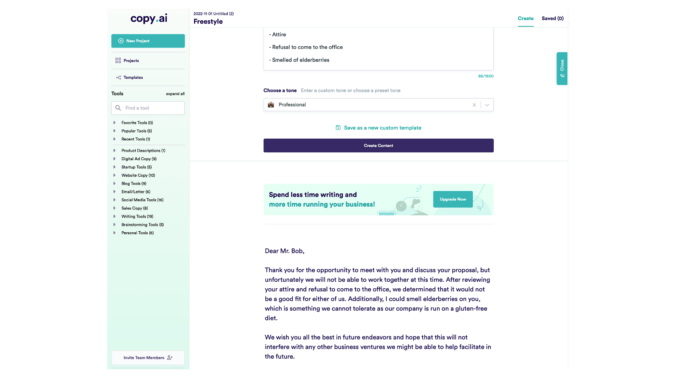
There are a growing number of startups that allow you to generate text based on prompts that are fed into a GPT-3-based generative AI system – could they be the future of legal drafting – at least at the very simple end?
There are more coming to market, but one that Artificial Lawyer looked at today is Copy.AI, where you give the system prompts to create text for things like website marketing information, job descriptions, and even job rejection letters.
Clearly the output here (see below) is way too basic at present to be used in a formal legal context, but the question is: can this reach the standards needed for lawyers to really use it?
This site conducted two experiments. First, one for rejecting a job applicant because of: attire, refusal to work in an office, and that they smelt of elderberries (apologies to Monty Python) – see below. This was based on one of their templates and went quite well, even if it’s a bit comical.
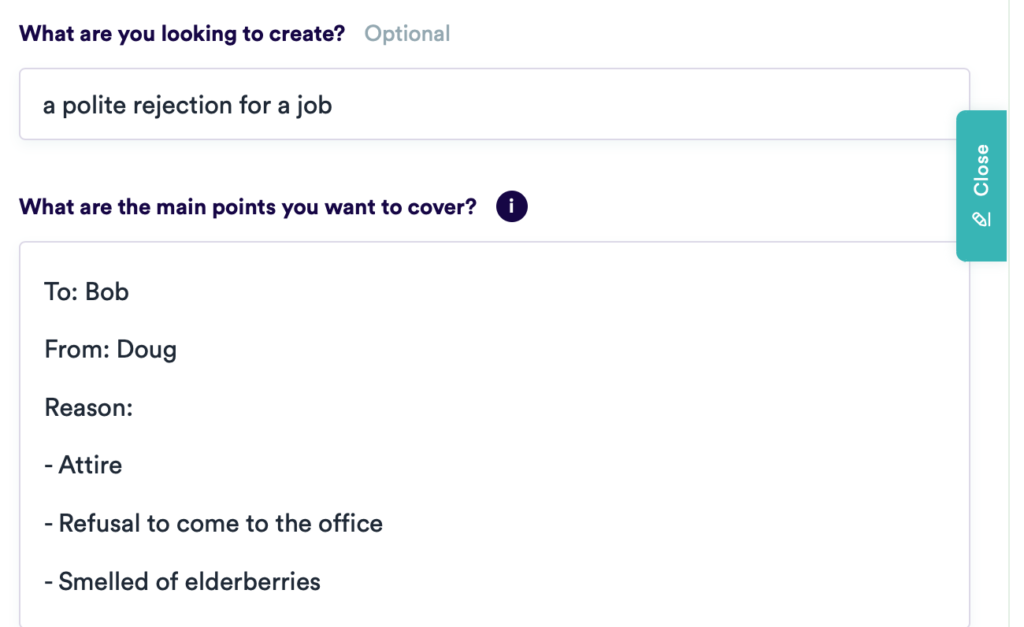
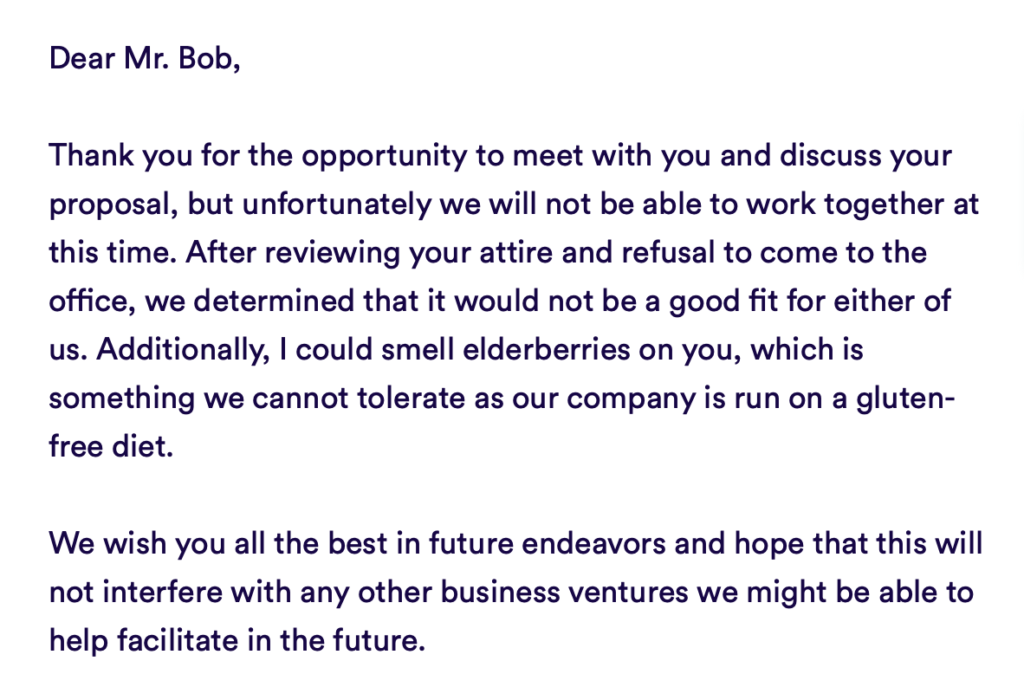
The second was a very basic effort to create an NDA – which is NOT something that is already a template in their system – and although fun was nowhere near good enough for any kind of real-world use.
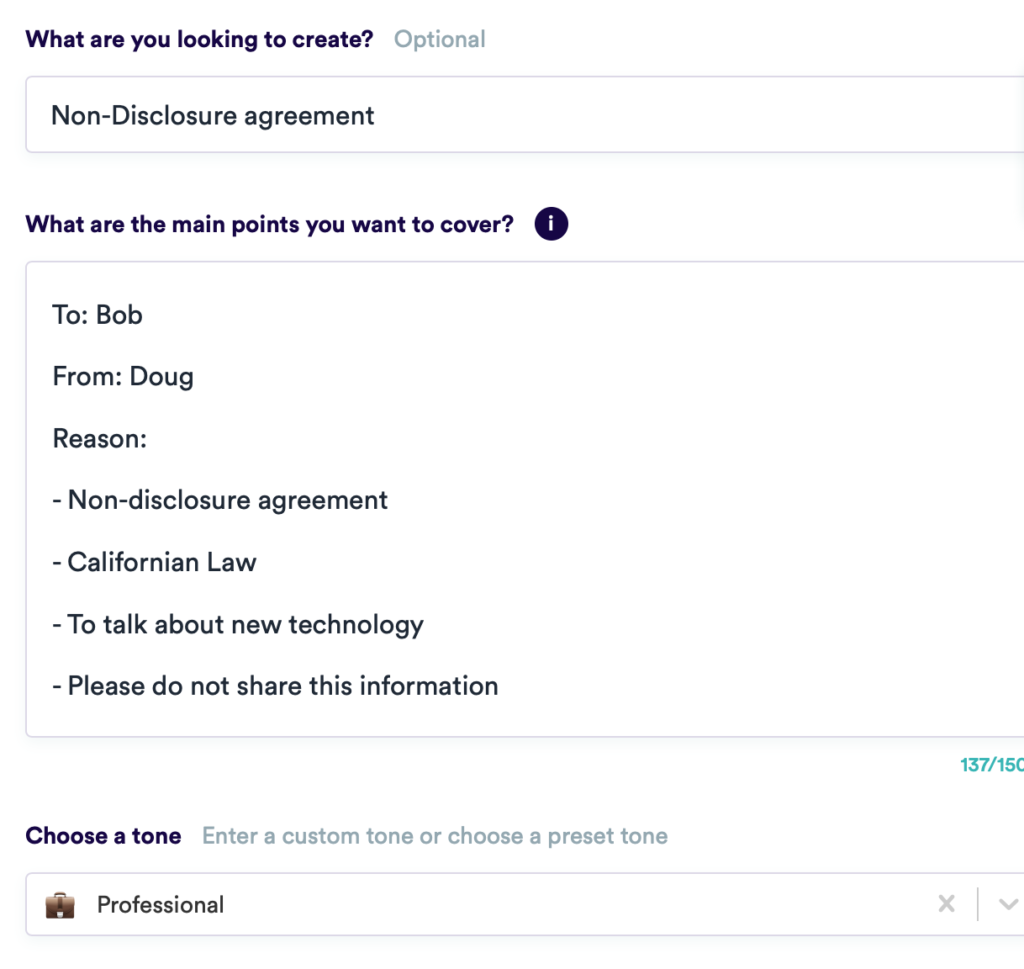
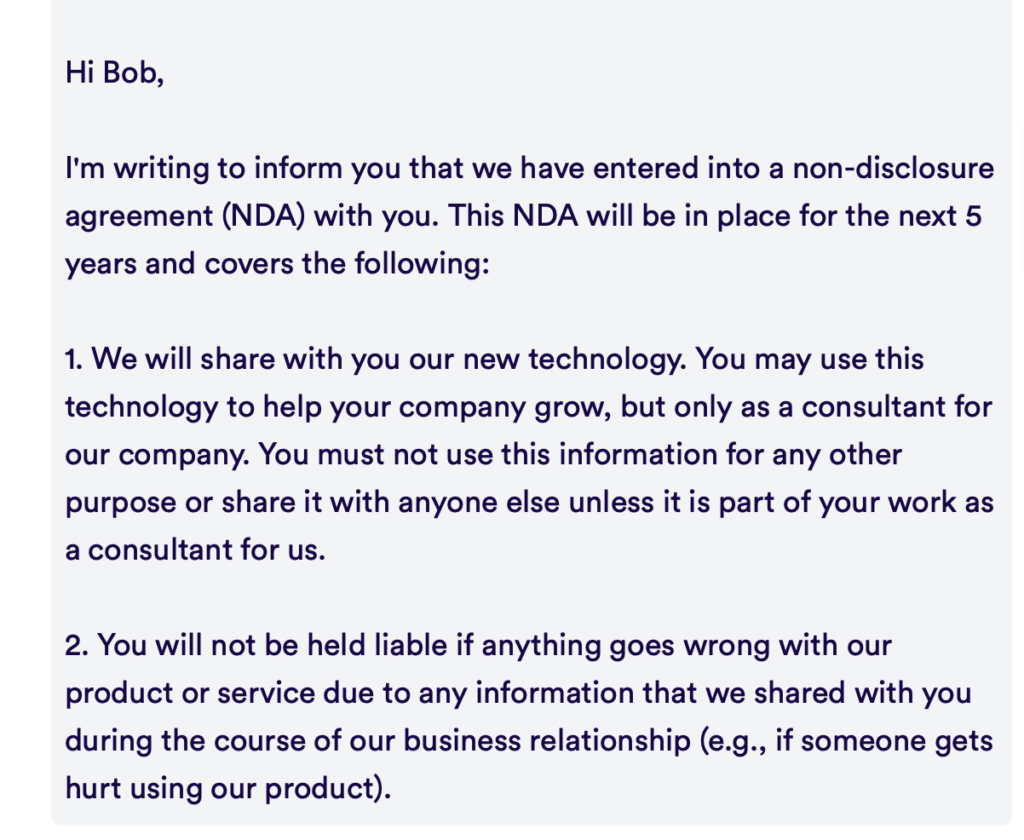
The key thing here is that ‘the AI’ has made text that really is very readable. If someone said it had been made by a person you’d believe it. The text is grammatically correct, it’s relevant, it covers the key topics. In short, it works. The challenge is that it’s way too simple at present. But that could change.
–
So, what does this tell us?
First we need to consider where this text comes from. Put simply it’s tapping the GPT-3 ‘library’ and then auto-creating a document that appears to most closely correspond to the multiple tags and prompts that have been given to it.
Would this be useable by a lawyer as it is now? No way. This is way too generic and general, too short, too simple, and basically not really serious enough to be used.
But could it get better? Yes, it could and there are others out there who are already exploring how to use this approach in a ‘serious’ way for legal doc generation.
The main challenge is that GPT-3 and other library approaches, and no matter how clever the AI modelling is, are working off a collection of docs and then creating something fused from many pieces.
Would it not simply be easier to create a traditional doc automation template that met your needs? For sure.
But, perhaps there is a middle way here? I.e. you create a range of templates, perhaps with a large clause bank also, that meets your specific needs to create a library as such, and then use the generative AI approach to build what you want from there? That way you keep to legally sound source material that has its bona fides and company/law firm approval to use.
Would that work? Potentially, yes. Although again, one can see some lawyers saying that if the idea is to avoid having to draft much on your own, then why not just use a template. While if there is no template and no precedent documents or language then how could a lawyer use such a generative approach with confidence, as the source docs would have to be generic?
Then you get onto things like data privacy and client confidentiality. Lawyers can’t easily send documents they are drafting off to a third party like this without knowing exactly what’s happening with the information, where it’s kept, and if data gets folded back into the AI system’s library.
Conclusion: this is very interesting, and as noted, there are players out there who are looking at serious legal use cases right now, but the more generic tools like this one have perhaps too many challenges to be of use at present.
Could all of this evolve in the future and perhaps quite rapidly….? For sure.